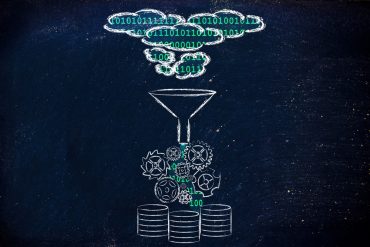
In this week’s real-time analytics news: Sumo Logic adds new capabilities to its observability solution, multiple open-source projects move forward, and more.
Keeping pace with news and developments in the real-time analytics market can be a daunting task. We want to help by providing a summary of some of the items our staff came across each week. Here are some of the news items from this week:
Sumo Logic announced new capabilities as part of its Observability solution to help DevOps/SRE teams identify and resolve customer-impacting issues faster, reduce application downtime, and optimize application performance. The new capabilities include:
- Sumo Logic Span Analytics, which lets users search, analyze, and query structured and unstructured application data, including transaction traces, logs, and metrics. This provides observers with a simplified search experience and an ability to filter, transform, and aggregate the span data to uncover unknown unknowns that help them to diagnose and resolve problems faster.
- Real User Monitoring (RUM), which arms operations teams with an understanding of the full end-to-end experience of every transaction, starting with a user’s browser click. Sumo Logic RUM provides high-level insights into user experience with the ability to segment by geographical region, OS, and browser, automatically connecting it to backend troubleshooting information.
The Linux Foundation announced it will host Pyrrha, created and contributed by Prometeo Platform S.L., in collaboration with IBM to help accelerate the development and deployment of firefighter safety technology around the world. In 2019, Prometeo was named the winner of the Call for Code Global Challenge, and since then, their technology has been further developed with updated hardware and enhanced software. By partnering with leading companies from the Call for Code ecosystem like Samsung, the goal is to customize and scale the solution around the world in an effort to help save lives.
The Apache Cassandra Project released v4.0 of Apache Cassandra, the open source, highly performant, distributed Big Data database management platform. Three years in the making, v4.0 reflects more than 1,000 bug fixes, improvements, and new features that include increased speed and scalability, improved consistency, enhanced security and observability, new configuration settings, minimized latency, and better compression.
Red Hat announced that the suite of integration tools it provides will now include support for Apache Camel K, a lightweight framework that integrates Kubernetes clusters with the open-source Apache Kafka distributed event streaming platform. Apache Camel codifies common enterprise integration patterns along with hundreds of connectors. Previously available from Red Hat as a technology preview, the Camel K project builds on that work to provide an instance of the framework that runs natively on Kubernetes to make it possible to interact with Apache Kafka events.
Moogsoft announced new product features and improvements to speed up incident response and collaboration by further enhancing Moogsoft’s integration with PagerDuty; automatically adding context to users’ troubleshooting by prioritizing and automating event workflows while connecting multiple data catalogs containing rich contextual information; increase availability and uptime by extending integrations to Splunk for events, and Telegraf and Prometheus for metrics and detecting anomalies in users’ AWS infrastructure; programmatically automate event and incident workflows and processes to reduce toil through all-new API functionality, and achieve greater accuracy and flexibility through automation via selected tag propagation.
IBM announced IBM z/OS V2.5, the next-generation operating system (OS) for IBM Z, designed to accelerate client adoption of hybrid cloud and AI and drive application modernization projects. With z/OS V2.5, IBM is introducing new high-performance AI capabilities that are tightly integrated with z/OS workloads, designed to give clients business insights for more informed decision making.
EZOPS announced that they are incorporating support for Snowflake to enhance operational efficiency for their customers. Snowflake customers can leverage EZOPS AI models to analyze patterns of streamed data. EZOPS AI models allow Snowflake customers to detect anomalies as well as predict break reasons.
AtScale announced the availability of AtScale AI-LinkTM, which provides a Python interface to AtScale. Data teams can use AtScale to consume live cloud data on platforms including Snowflake, AWS, Microsoft Azure, Google Cloud, and Databricks, with the tools of their choice, including Tableau, Power BI, and Excel. With AI-Link, data scientists can use Python to access the same governed source of enterprise metrics.
Red Hat and Nutanix announced a partnership to enable a solution for building, scaling, and managing cloud-native applications on-premises and in hybrid clouds. The collaboration brings together the technologies and management of Red Hat OpenShift and Red Hat Enterprise Linux with Nutanix Cloud Platform, including Nutanix AOS and AHV.
Couchbase, Inc. announced the general availability of Couchbase Server 7. With Couchbase Server 7, enterprise development teams get one unified platform and no longer need to use one database for transactions and a separate database for developer agility and scale. This release allows enterprises to move business-critical applications more quickly into the cloud, improve application flexibility, and increase developer agility.
Cupix announced the integration of its CupixWorks 2.0 3D digital twin platform with Autodesk’s BIM 360 construction management platform. Cupix’s new cross-platform integration with Autodesk BIM 360 streamlines the creation of Request for Information (RFIs) and issues in the BIM 360 platform. Earlier this year, Cupix integrated with Autodesk’s PlanGrid platform, enabling users to create tasks and RFIs while in site view.
Real-time analytics news in brief:
Domino Data Lab announced the Domino Partner Network (DPN), an ecosystem of technology and services partners to help scale ML efforts using Enterprise MLOps. With DPN, Domino can orchestrate a complete data science ecosystem, connecting technology and services partners across four categories: tools and data, infrastructure, solutions, and implementation and consulting.
Dynatrace announced customers can extend Smartscape, the Dynatrace platform’s real-time and continuously updated topology, to bring Dynatrace’s AIOps and analytics capabilities to more open-source services, including OpenTelemetry, FluentD, and Prometheus.
TigerGraph announced that TigerGraph Cloud is now available on Google Cloud Marketplace. The integrated experience and the unified billing model offered by Google Cloud Marketplace makes it easier for data scientists, business analysts, and developers to get started with TigerGraph Cloud.
Apptio, Inc. announced its first certified solution available in the ServiceNow Store. This integration with ServiceNow provides users with a near real-time view of their organization’s actual technology cost structure. By combining operational data from ServiceNow with IT cost modeling software from Apptio, technology leaders are able to make smarter investment decisions more quickly.
HVR announced the expansion of its Partner Program, which includes new features and benefits to its portfolio of global partners. Delphix and MariaDB will join the growing list of HVR’s partners, including Snowflake, AWS, Microsoft, Google Cloud, Databricks, and more.
Atos will acquire Visual BI. Adding Visual BI’s cloud data-related capabilities, consulting services, and partnerships to its technology portfolio will let Atos enhance its ability to address customers’ increasing need for BI and analytics in cloud environments.
DataRobot announced the acquisition of Algorithmia. By integrating Algorithmia’s technology with DataRobot’s existing model monitoring and model management capabilities, users will have access to a reliable and cost-effective operational backbone for running any machine learning model.
Ampere Computing announced it has agreed to acquire OnSpecta, strengthening Ampere Altra’s performance with AI inference applications. The companies have been collaborating and demonstrated over 4x acceleration on Ampere-based instances running popular AI-inference workloads.
If your company has real-time analytics news, send your announcements to [email protected].
In case you missed it, here are our most recent previous weekly real-time analytics news roundups:






























